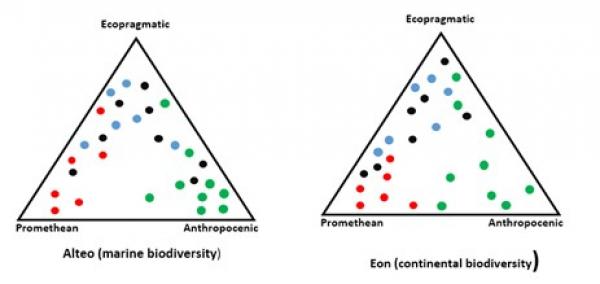HERNANDEZ Solange, BOUTIN Nathalie (OT-Med PhD), BATTEAU Pierre (CERGAM - AMU)
GACHET Sophie (IMBE - AMU)
This project addresses the issue of territorial management of biodiversity, focused on a comparative study of several groups of cities of the Bouches-du-Rhône (France) and the Mediterranean region that are sumbitted to intense human-environment interactions.
It aims at developing a conceptual and theoretical framework to build a consistent data set on biodiversity, human pressure, expectations and representations in environmental matters, as well as decisions of public and private stakeholders affecting biodiversity.
To which extent biodiversity is a real preoccupation in public and private decisions affecting it? This question is approached through two environmental conflicts about projects with significant effects on both marine (Alteo case) and continental (E.On case) biodiversity. It is shown that territorial regulatory tools for conflict mitigation are inadequate, which exacerbates disputes among stakeholders and levels of public decisions. The persistent divergence among stakeholders is explained by their decision-making method supported by a particular vision of the following three identified Man-Nature relationships: 1) "Anthropocenic", 2) "Eco-pragmatic" and 3) "Promethean". Thus, each conflict requires institutional tools with regard to the distribution of these visions, acting as filters of attitudes. This research shows how the interplay between vested interests leaves biodiversity in oblivion by lack of its institutionalization. It is observed that the invocation of "myths of nature" seems to play a positive role in the diffusion of values for greater concern for biodiversity. To upgrade biodiversity in national agendas it is recommended to reform deeply its institutional status at all levels. This requires innovation in new tools of local and national management of environmental conflicts where biodiversity is at stake.
This figure illustrates the tool for conflict analysis: it is inferred from about 1000 analysis of shorter verbatim from medias and reports and in-depth long interviews of 32 decision and policy makers.
This figure shows how to map conflicts: There are here four great categories of stakeholders representing respectively plural sector (NGOs, associations, …) (green), (private sector) (red), national public sector (black), local public sector (blue). In a triangle, each stakeholder is positioned according to the mix of her three distances to extreme visions at the summits. The map allows assessing the intensity of conflicts. In the first case, Alteo, the repartition is symbolized in 1a with a greater dispersion of the national public sector, and a smaller dispersion of the plural sector, a configuration displacing the conflict at the upper level. Whereas in the E.On case, (1b) the dispersion is higher in the plural sector while more concentrated eco-pragmatic in the national public sector. N.B. the positioning of stakeholders is qualitative and does not correspond to precisely measured observations. However this tool allows categorizing conflicts and will be used for measuring by questionnaire in further research.



